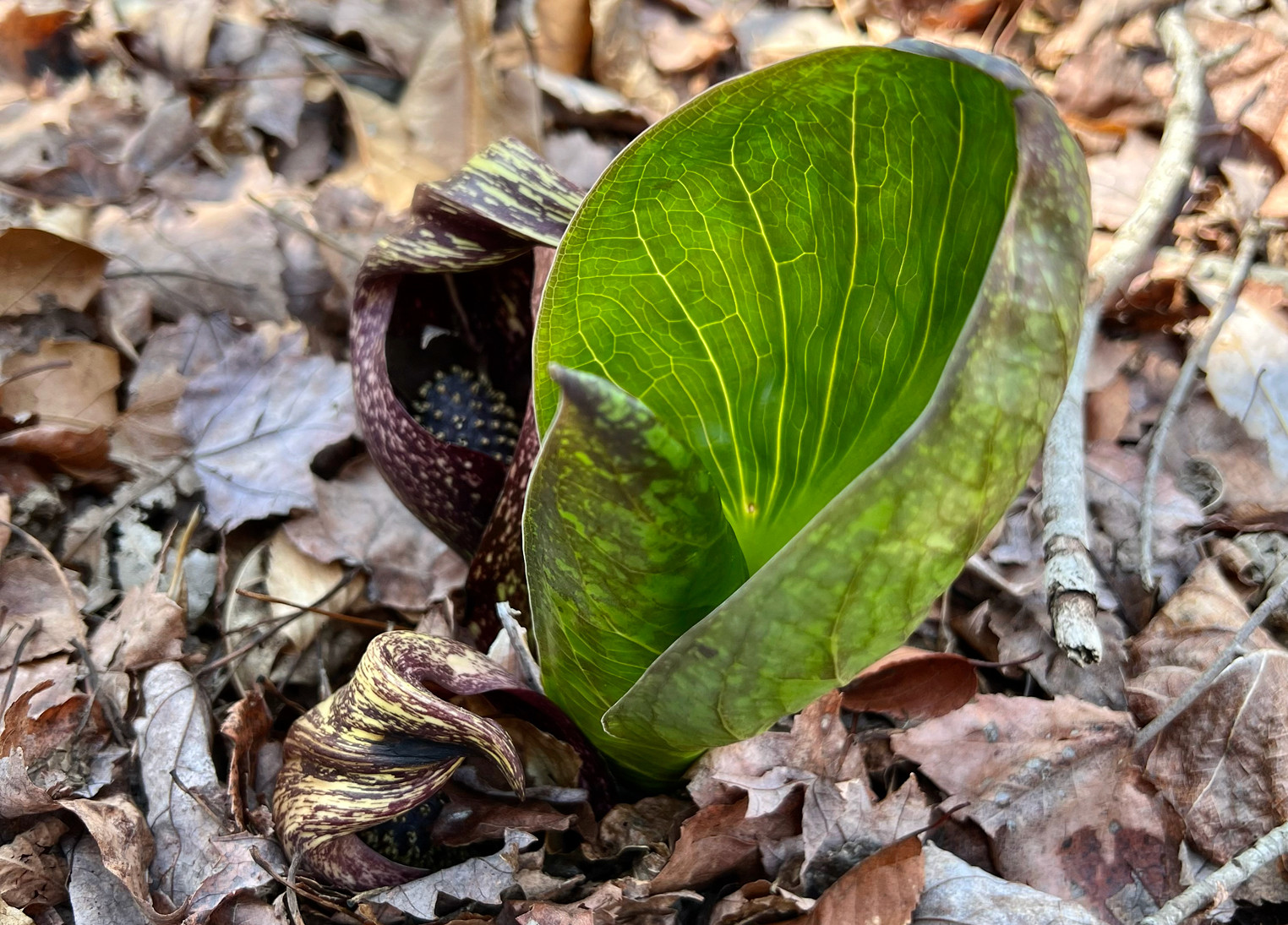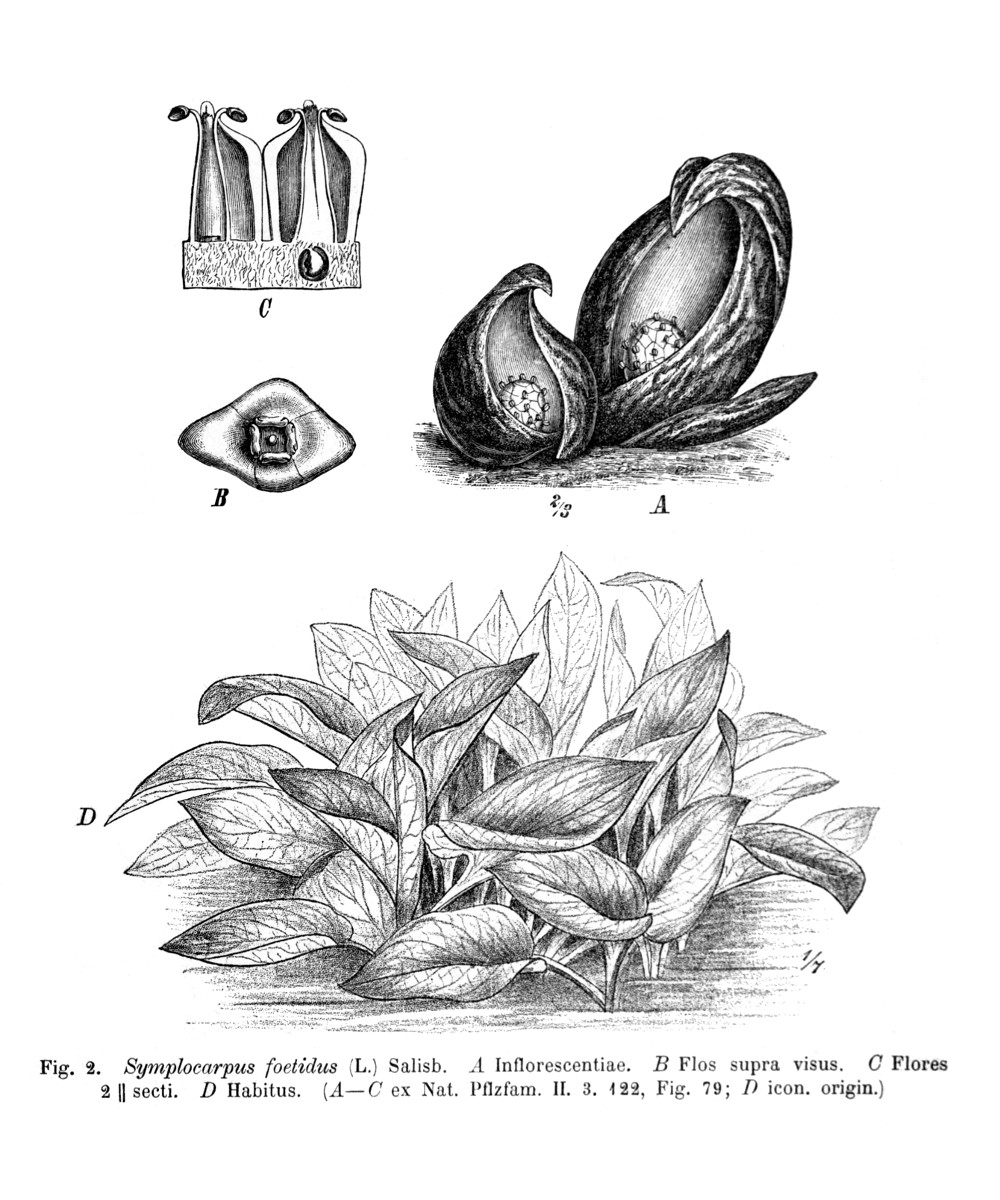Symplocarpus foetidus (L.) Salisb. - syn.Dracontium foetidum L.; Spathyema foetida (L.)Raf. - Araceae
skunk cabbage, polecat weed, Stinkkohl
Rhizomatous herb, native to Northeast America; roots flehsy, rhizomes thick, to 30cm long; leaves petiole sheathed basally, soft; inflorescences at ground level, small flowers borne on a barrel-shaped spadix, sorrounded by a large, hoodlike, 6-13cm, yellowish to dark red-purple; the inflorescence usually appears before the leaves; infructescences dark purple-green to dark red-brown, globose to oblong or ovoid, 4-7cm; seeds brown, 7-15mm diam.
„When bruised or broken, all parts of Symplocarpus foetidus give off an unpleasant odor… Symplocarpus foetidus, in various forms and often combined with other plants, was used medicinally by Nnative Americans for a variety of ailments, including swellings, coughs, consumption, rheumatism, wounds, convulsions, cramps, hemorrhages, toothaches, and headaches (D. E. Moerman 1986). Skunk cabbage was officially listed as the drug „dracontium“ in the U. S. Pharmacopoeia from 1820 to 1880 for treating diseases of respiratory organs, nervous disorders, rheumatism, and dropsy (A. Henkel 1907). Plants are sparingly cultivated as a curiosity in North American gardens and are reported to be highly prized in aquatic gardens in European estates and public parks (F. W. Case 1992).“
http://www.efloras.org/florataxon.aspx?flora_id=1&taxon_id=200027331
„Eastern skunk cabbage has contractile roots which contract after growing into the earth. This pulls the stem of the plant deeper into the mud, so that the plant in effect grows downward, not upward. Each year, the plant grows deeper into the earth, so that older plants are practically impossible to dig up. They reproduce by hard, pea-sized seeds which fall in the mud and are carried away by animals or by floods.“ http://en.wikipedia.org/wiki/Symplocarpus_foetidus
Soon after snow melts in early spring, when air temperatures are often below freezing, the inflorescense of this species developes above ground. An increase of the respiration rate results in heat production of the spadices.
[Dynamics and precision of thermoregulatory responses of eastern skunk cabbage Symplocarpus foetidus. Seymour, R. S., Plant, Cell & Environment, Vol.27(8), 2004, 1014-1022]
http://onlinelibrary.wiley.com/doi/10.1111/j.1365-3040.2004.01206.x/full
The odor of S.foetidus is dominated by dimethyl disulfide. „…the floral odors of both male and female skunk cabbage plants contain dimethyl disulfide, aliphatic hydrocarbons, carboxylic acids, and esters, whereas aromatic hydrocarbons and indole compounds were unique to female plants.“
[Kozen, E. N. (2013). The scent of eastern skunk cabbage, symplocarpus foetidus (araceae): Qualification of floral volatiles and sex differences in floral scent composition (Doctoral dissertation, Indiana University of Pennsylvania)]

Symplocarpus foetidus mature inflorescense and developing leaves, Blue Trail, Mill Neck, NY, US (2025) © tautoga CC BY-SA 4.0 inaturalist.org

Engler,H.G.A., Das Pflanzenreich, Araceae - Monsteroideae- Calloideae, vol.23(B[2]) [Heft 37], p.151, fig.2 (1908)
http://plantgenera.org/species.php?id_species=989294

